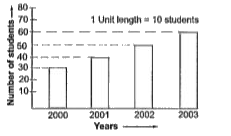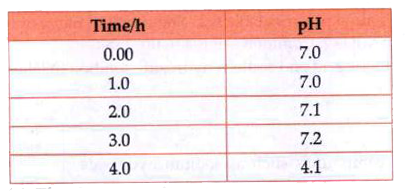There was a medical check-up of teeth of a particular class in a school. It was found that some students had cavities in their teeth. The teacher asked them two questions. First, how many chocolates or sweets do they eat? Second, which toothpaste do they use for brushing their teeth, i.e., does it contain fluoride or not?
After reading the above paragraph, answer the following questions :
(b) What is the limiting value of the fluoride that should be present in the toothpaste? What happens if this limit is exceeded?
To answer the question regarding the limiting value of fluoride that should be present in toothpaste and the consequences of exceeding this limit, we can break down the solution into clear steps:
1. Understanding Fluoride in Toothpaste:
- Fluoride is a mineral that helps to strengthen teeth and prevent cavities. It is commonly added to toothpaste for its dental benefits.
2. Limiting Value of Fluoride:
- The ideal concentration of fluoride in toothpaste is 1 part per million (ppm). This means that for every million parts of toothpaste, there should be 1 part of fluoride.
3. Effects of Exceeding the Limit:
- If the fluoride concentration exceeds 1.1 ppm, it can start to cause dental issues. Specifically, at concentrations around 1.5 ppm, the enamel of the teeth can begin to corrode, leading to the development of spots on the teeth.
- If fluoride levels exceed 1.5 ppm, it can become toxic and act as a poison. Excessive fluoride exposure can lead to serious health issues, as fluoride is used in some rodenticides (rat poison) due to its toxicity at high levels.
4. Conclusion:
- Therefore, the limiting value of fluoride in toothpaste should be maintained at or below 1 ppm to ensure dental health and avoid toxicity.
- Fluoride is a mineral that helps to strengthen teeth and prevent cavities. It is commonly added to toothpaste for its dental benefits.
- The ideal concentration of fluoride in toothpaste is 1 part per million (ppm). This means that for every million parts of toothpaste, there should be 1 part of fluoride.
- If the fluoride concentration exceeds 1.1 ppm, it can start to cause dental issues. Specifically, at concentrations around 1.5 ppm, the enamel of the teeth can begin to corrode, leading to the development of spots on the teeth.
- If fluoride levels exceed 1.5 ppm, it can become toxic and act as a poison. Excessive fluoride exposure can lead to serious health issues, as fluoride is used in some rodenticides (rat poison) due to its toxicity at high levels.
- Therefore, the limiting value of fluoride in toothpaste should be maintained at or below 1 ppm to ensure dental health and avoid toxicity.
Topper's Solved these Questions
- BOOK - PRADEEPCHAPTER - SOLUTIONSEXERCISE - Competition (FOCUS) JEE (Main and Advanced)/Medical Entrance SPECIAL (I. Multiple Choice Question )82videos
SOLUTIONS
- BOOK - PRADEEPCHAPTER - SOLUTIONSEXERCISE - Competition (FOCUS) JEE (Main and Advanced)/Medical Entrance SPECIAL (II. Multiple Choice Question )7videos
SOLUTIONS
- BOOK - PRADEEPCHAPTER - SOLUTIONSEXERCISE - HIGHER ORDER THINKING SKILLS (OUESTIONS PROBLEMS WITH ANSWERS/SOLUTIONS) (HOTS PROBLEMS)20videos
SOLUTIONS
- BOOK - PRADEEPCHAPTER - REDOX REACTIONS EXERCISE - Assertion reason type question16videos
REDOX REACTIONS
- BOOK - PRADEEPCHAPTER - SOME BASIC CONCEPTS OF CHEMISTRYEXERCISE - Competition (FOCUS) JEE (Main and Advanced)/Medical Entrance SPECIAL (VIII. Assertion-Reason Type Questions)(Type II)13videos
SOME BASIC CONCEPTS OF CHEMISTRY
Similar Questions
There was a medical check-up of teeth of a particular class in a school. It was found that some students had cavities in their teeth. The teacher asked them two questions. First, how many chocolates or sweets do they eat? Second, which toothpaste do they use for brushing their teeth, i.e., does it contain fluoride or not?
After reading the above paragraph, answer the following questions :
(c) How does fluoride protect our teeth ?View SolutionThere was a medical check-up of teeth of a particular class in a school. It was found that some students had cavities in their teeth. The teacher asked them two questions. First, how many chocolates or sweets do they eat? Second, which toothpaste do they use for brushing their teeth, i.e., does it contain fluoride or not?
After reading the above paragraph, answer the following questions :
(a) What values are expressed by the teacher?View Solution
Knowledge Check
- Question 1 - Select One
A teacher asks the questions in the class to
Akeep students busyBattract students attentionCmaintain disciplineDFor curriculum - Question 2 - Select One
The following bar graph shows the number of students in a particular class of school. Then, answer the following questions.

(i) What is the nuber of students in the year 2003 ?A70B60C50D40
Teeth
View SolutionHow are cavities in teeth formed?
View SolutionThe arrangement of teeth in a particular species is called____.
View SolutionWhy brushing the teeth after eating is a good habit ?
View SolutionVikash went to vegetable market with his elder sister, a M.Sc Botany student. There he saw many varieties of different vegetables such as different kinds of chilies (short, long, round, pungent, less pungent, green reddish, orange), several varieties of potato and tomatoes. He asked his sister the following questions.
(i) What is the need of producing so many varieties of different crop plants.
(ii) What is the name of branch of science which deals with crop improvement ?
(iii) What are the methods used by plant breeders ?
(iv) What is hybridization ?View SolutionStudy the given table and answer the following questions. It shows the pH value of the plaque (which collects around teeth) surrounding the teeth of a child over three hours.

What causes tooth decay?View Solution

